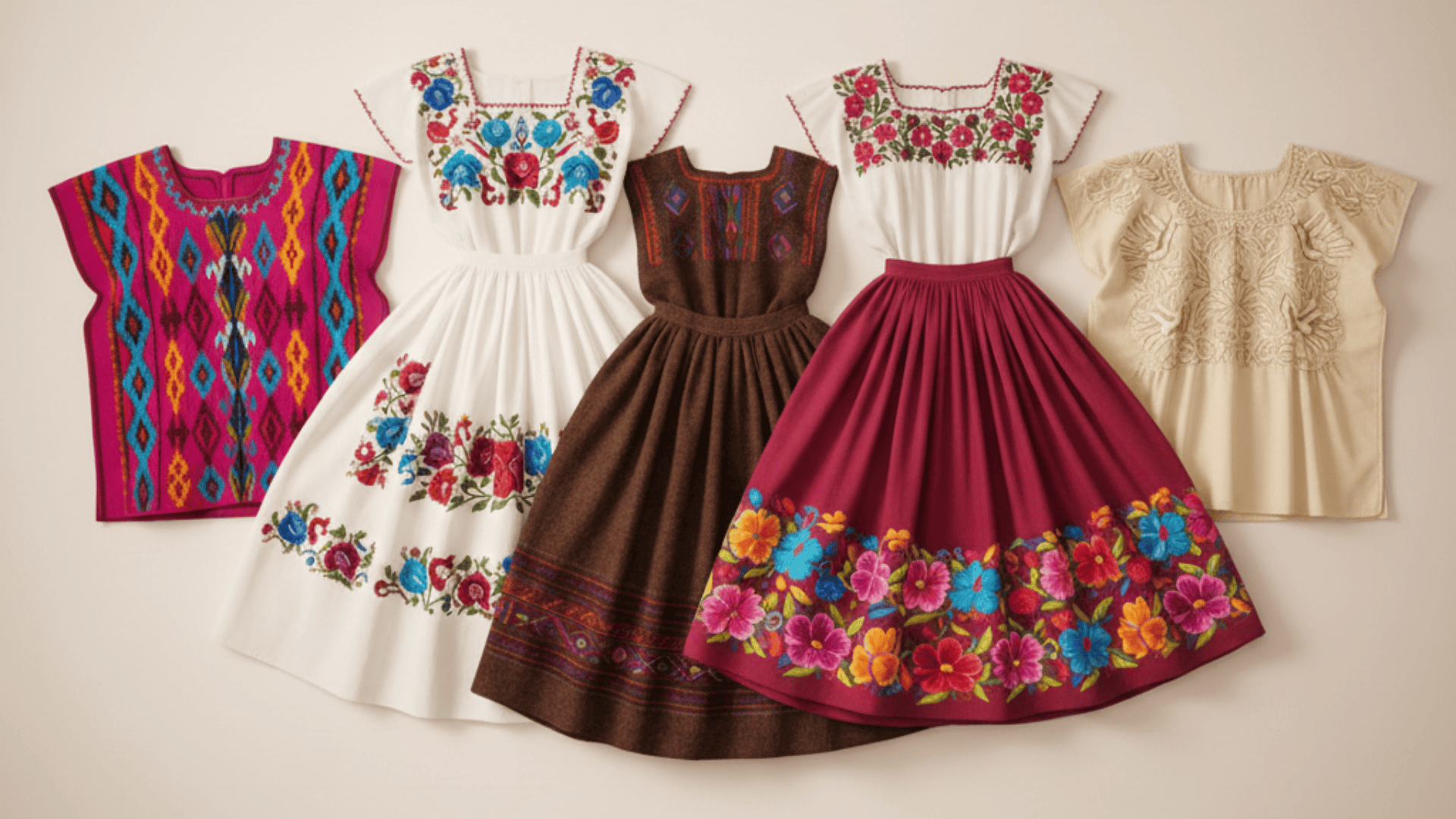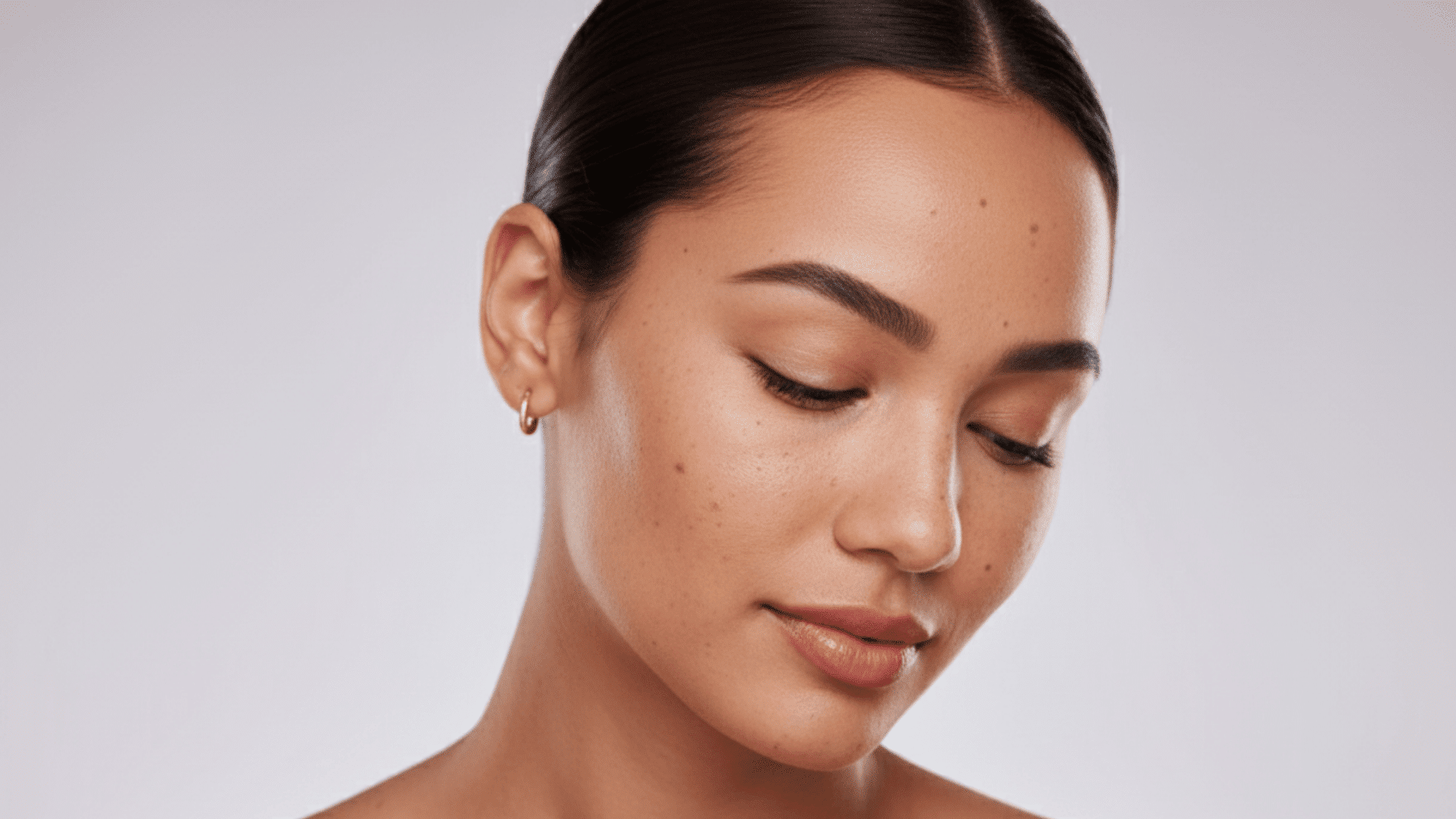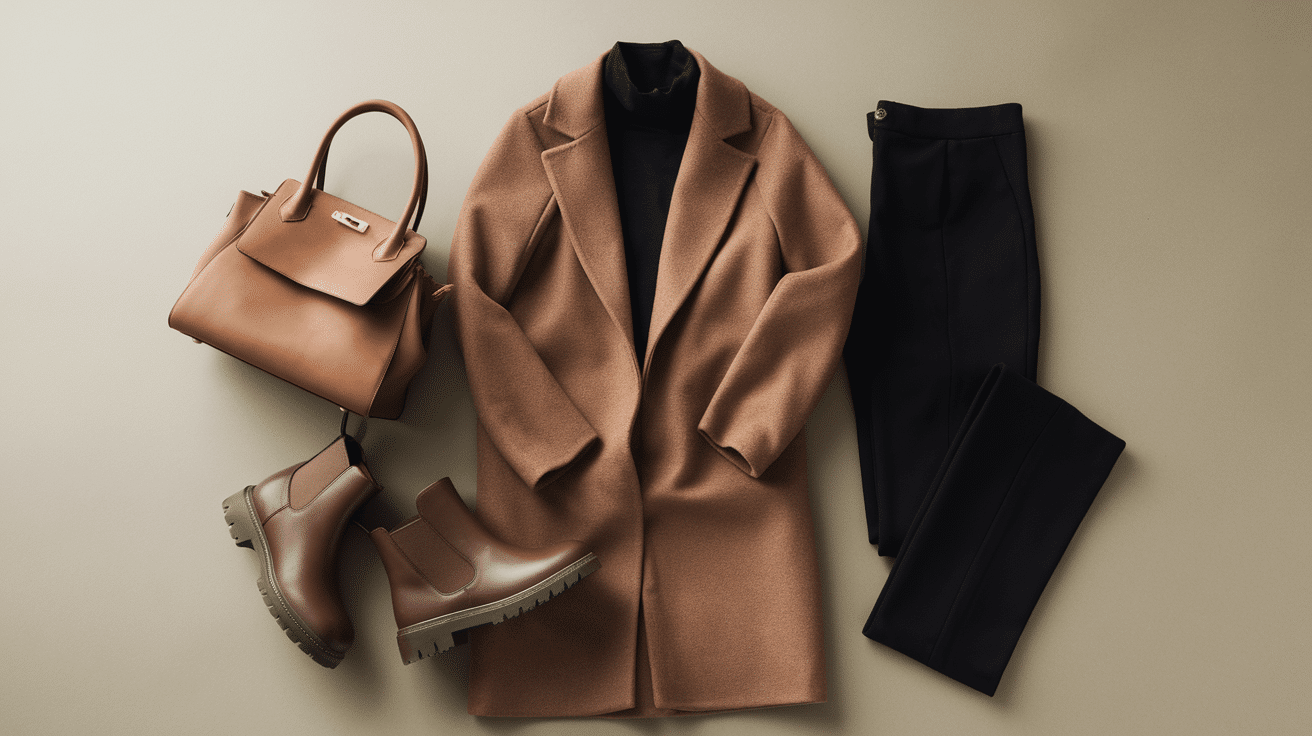hello testing
ksjhdkajsdnkabfkjasnbfkhbasn
Cultural Roots of Traditional Mexican Clothing
Traditional Mexican clothing traces its origins to indigenous communities that mastered weaving long before European contact.
Using natural fibers such as cotton and agave, artisans created vibrant textiles that expressed identity and regional pride.
The arrival of Spanish settlers introduced new fabrics and sewing styles, which blended with local craftsmanship to form distinctive designs.
Over generations, this cultural exchange has shaped the garments recognized today.
From handwoven huipiles to colorful sarapes, each piece reflects Mexico’s enduring artistry and its deep connection to heritage.
Key Garments in Traditional Mexican Clothing
Traditional Mexican clothing is known for its artistry and symbolism.
Each garment carries cultural meaning, shaped by regional traditions and centuries of craftsmanship.
These pieces not only serve as clothing but also as reflections of history, identity, and creative expression.
1. Huipil
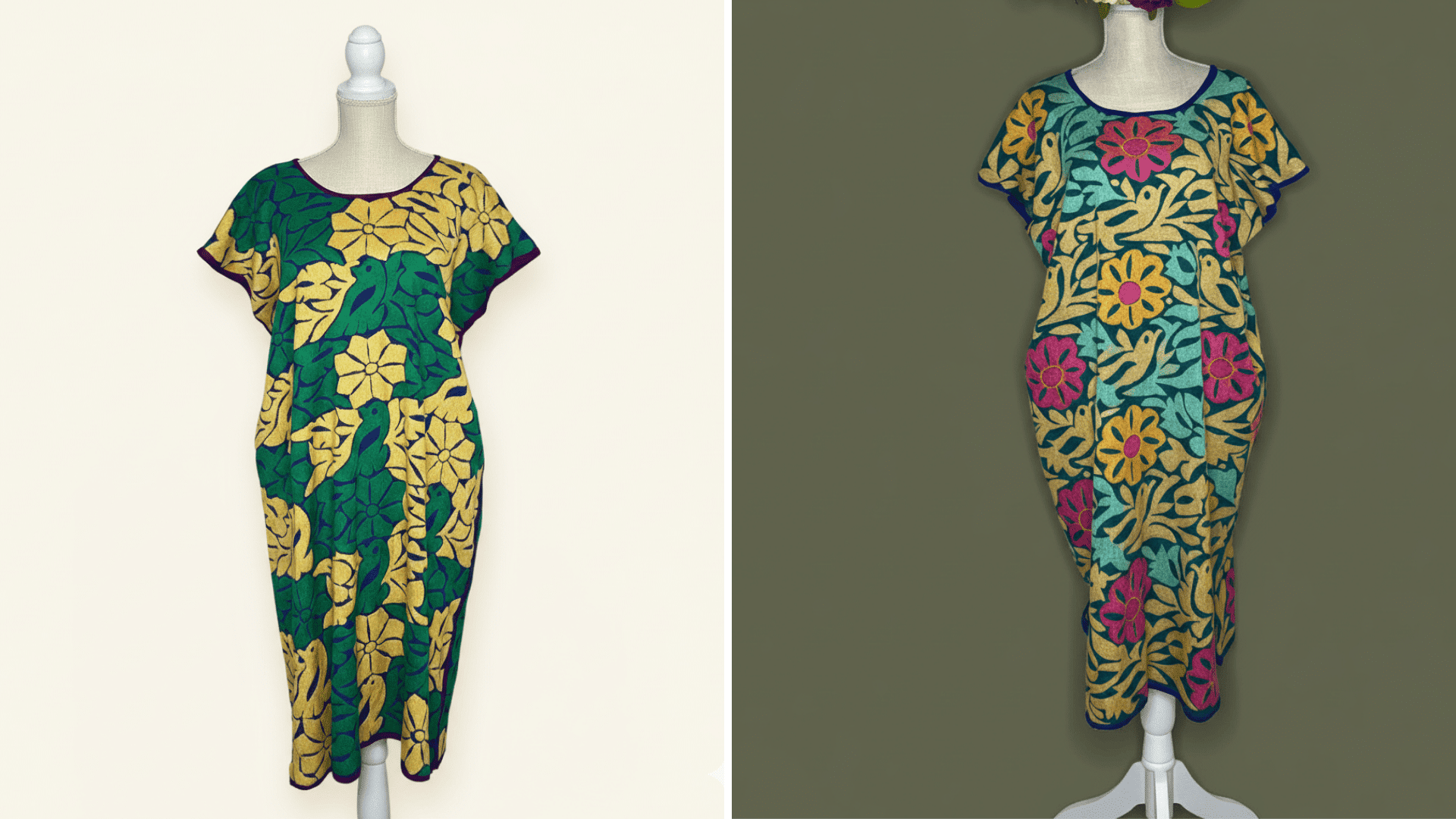
The huipil is a sleeveless tunic made from handwoven fabric, often adorned with colorful embroidery representing local patterns and beliefs.
Traditionally worn by women, it varies in design across regions, reflecting community identity.
Today, it remains a proud symbol of indigenous heritage and artistry.
2. Blouse (Blusa)
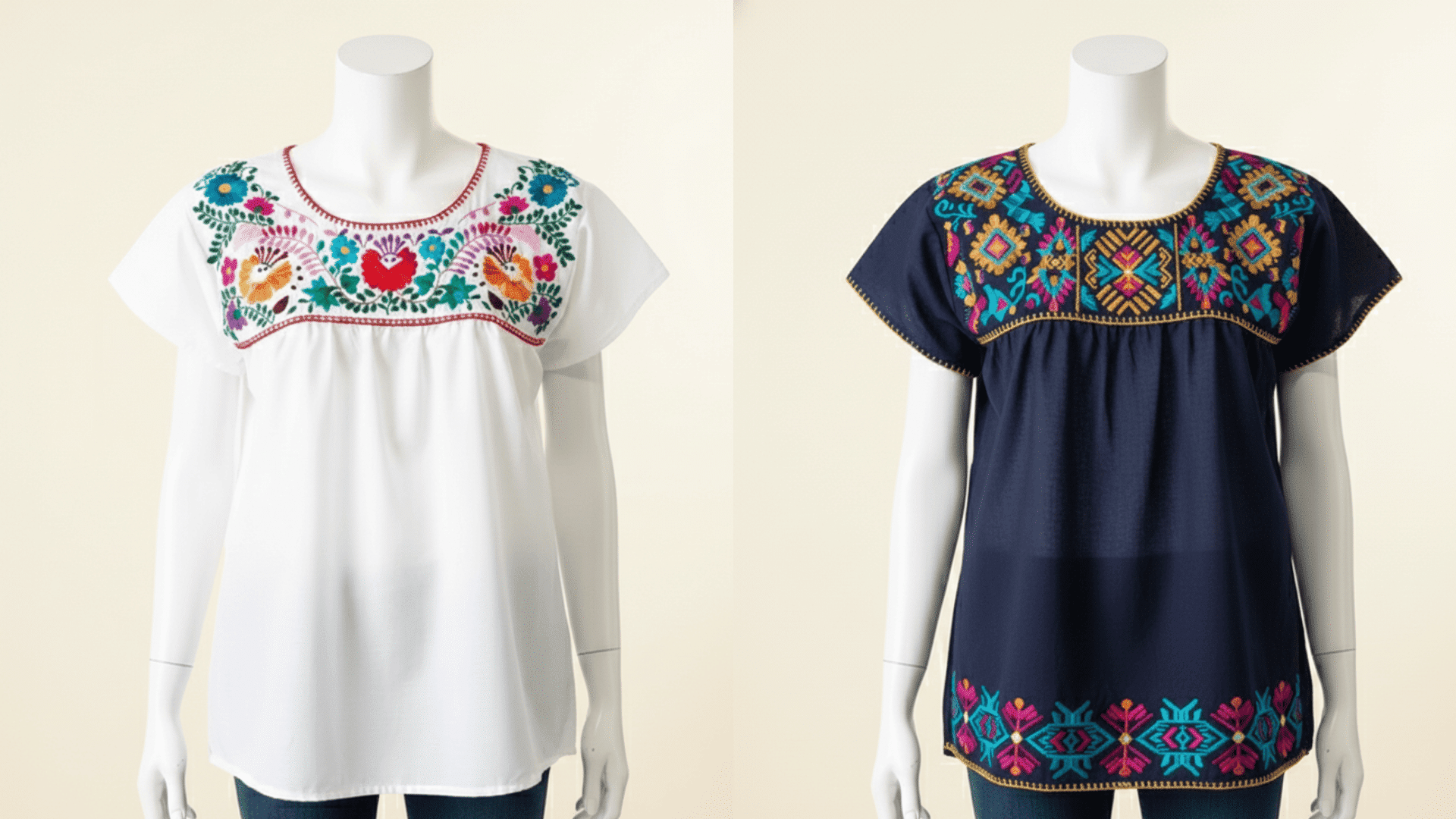
The blusa combines indigenous weaving with colonial influence, showcasing floral embroidery and intricate stitching.
Lightweight fabrics such as cotton or muslin make it suitable for Mexico’s warm climate.
Many artisans personalize each blouse with motifs that represent nature or daily life.
3. Skirt
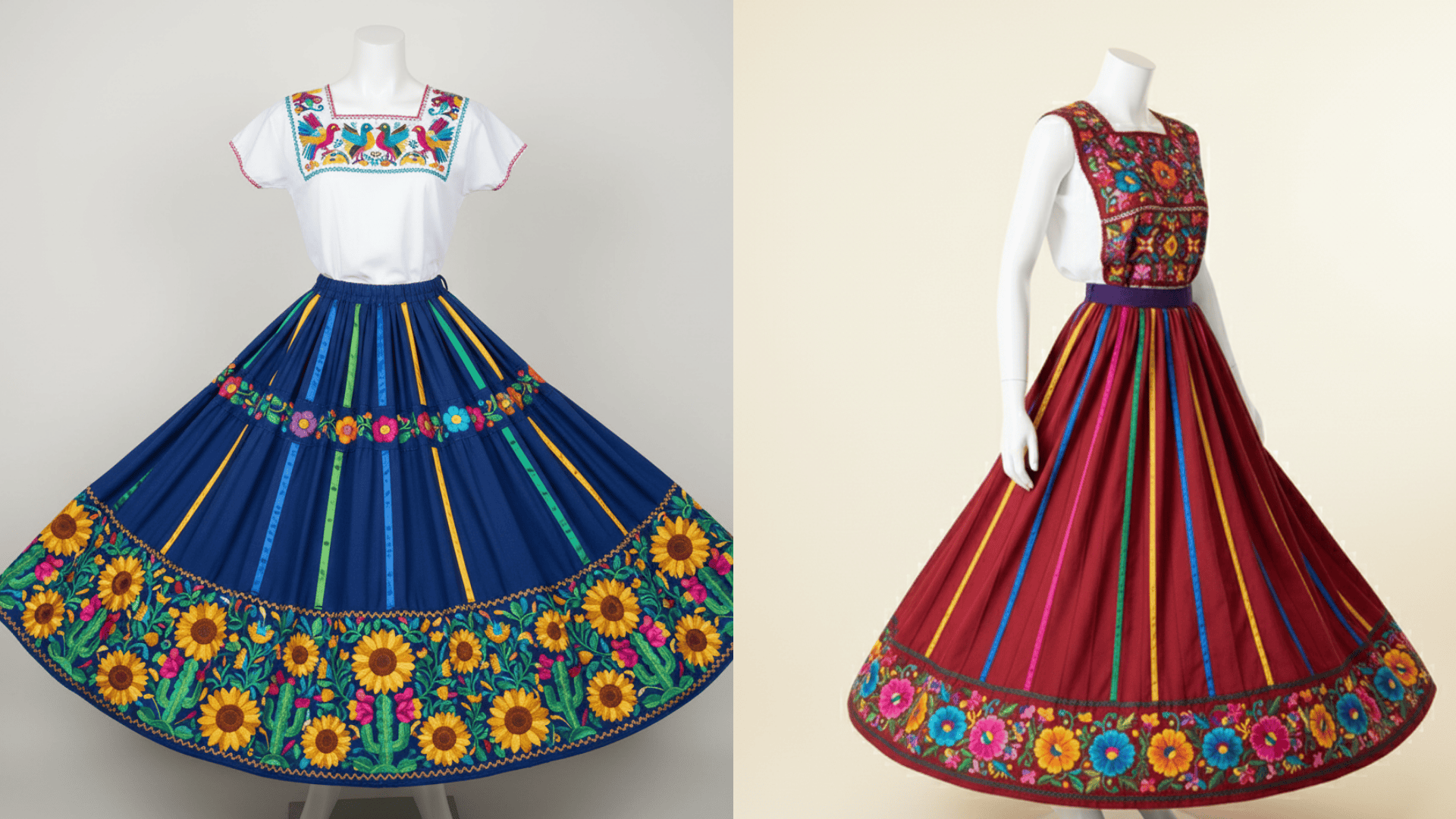
Traditional skirts are designed in flowing styles, often featuring ribbons, pleats, or embroidered panels.
The colors and patterns can represent marital status, festivals, or regional pride.
Their movement and structure add beauty and rhythm to traditional dance and celebration.
4. Rebozo
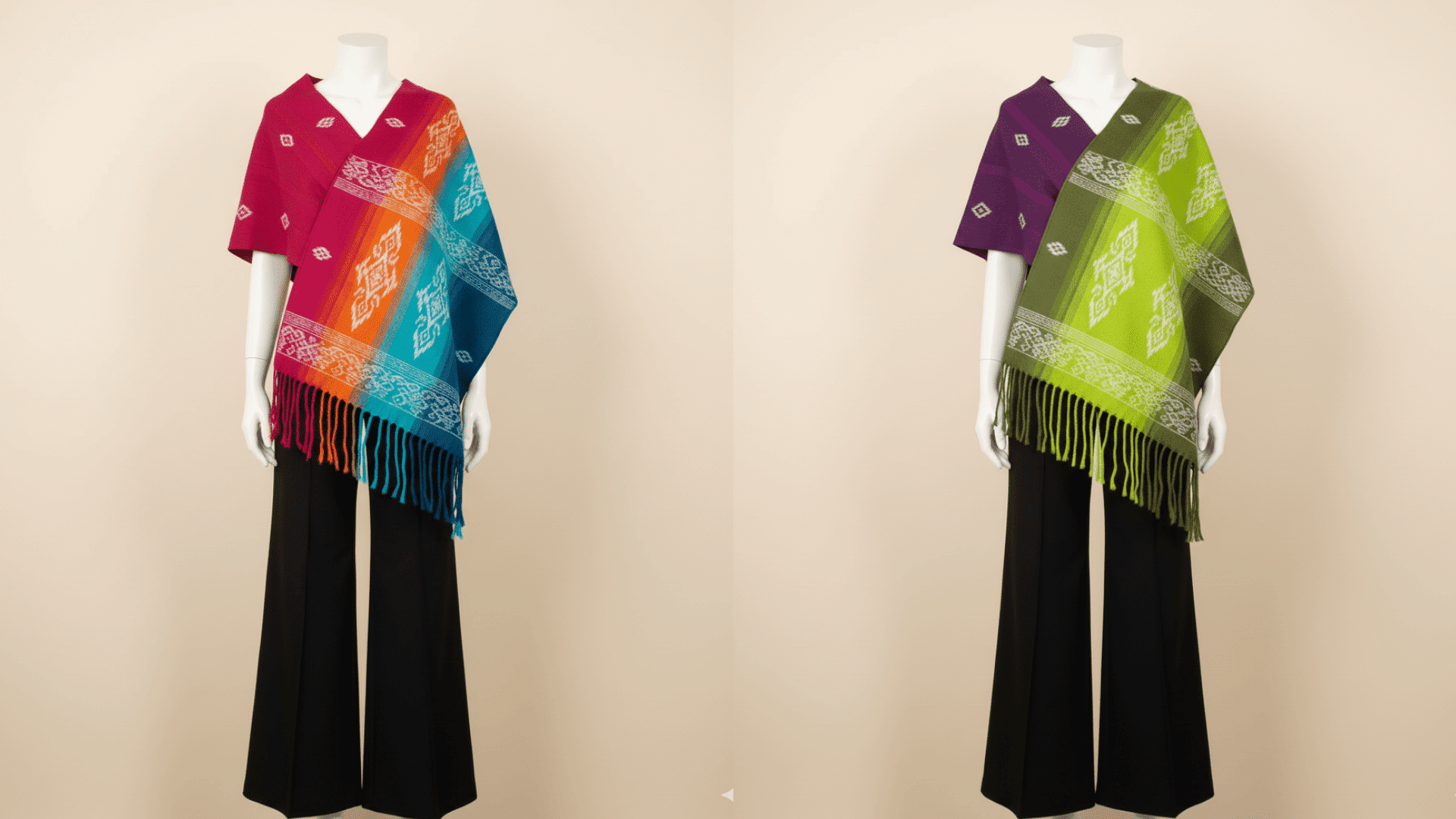
The rebozo is a woven shawl that blends practicality with beauty.
It serves as an accessory, a wrap, or even a baby carrier, symbolizing warmth and unity.
Crafted in cotton or silk, the rebozo’s signature gradient design shows remarkable weaving skill.
5. Sarape

The sarape is a long, woven shawl traditionally worn by men, known for its vivid stripes and geometric patterns.
Once used as outerwear, it has become a national emblem of style and identity.
Today, it appears in both cultural ceremonies and modern fashion.
6. Accessories

Accessories such as sombreros, huaraches, and woven belts complete the traditional look.
These handcrafted items use natural materials such as straw and leather, reflecting local resources and skills.
Beyond functionality, they carry deep cultural and regional significance.
Regional Styles of Traditional Mexican Clothing
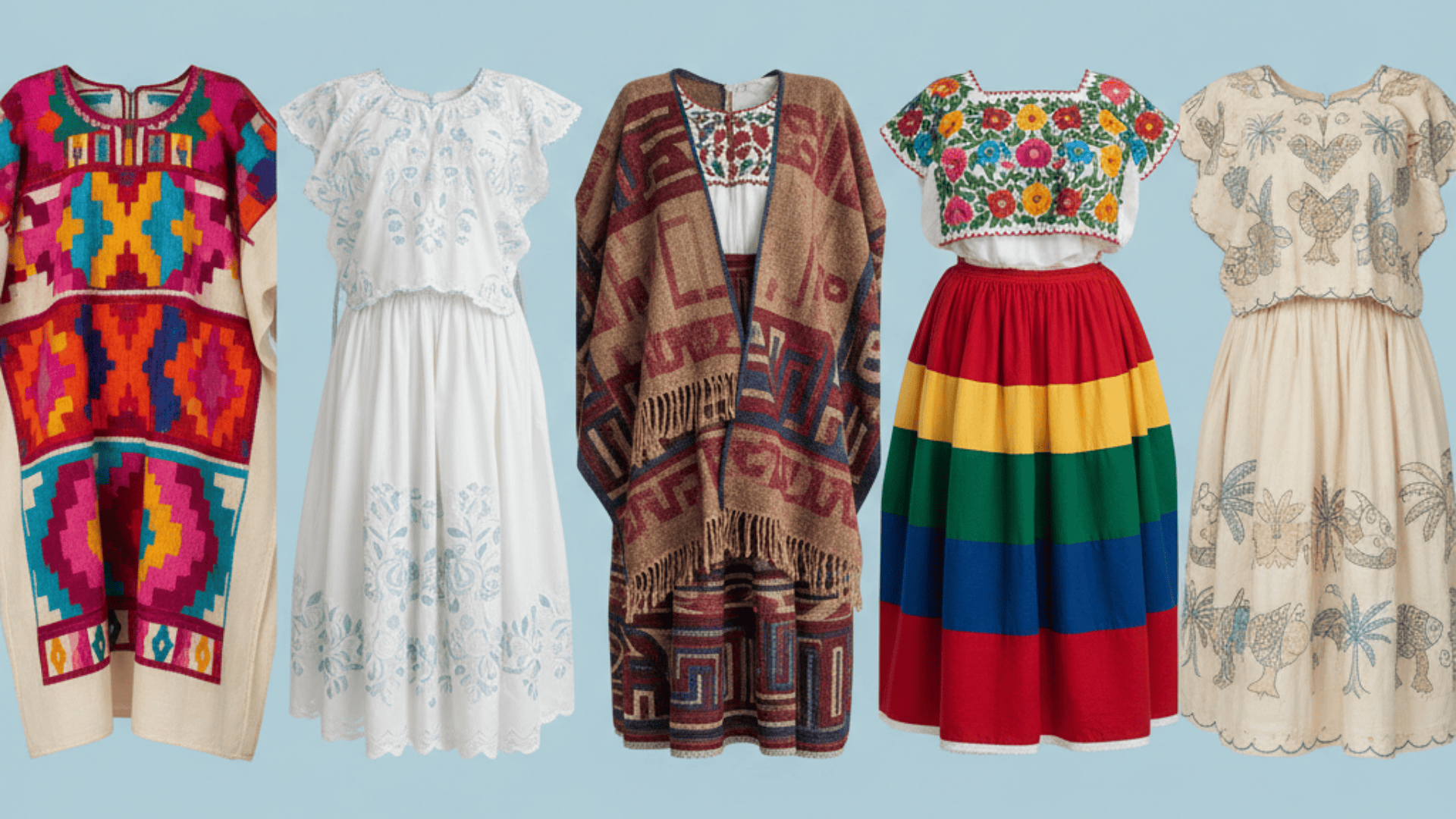
Mexico’s regional clothing traditions reveal how geography and culture shape distinct styles across the country.
Each area has developed its own textiles, colors, and embroidery that reflect community heritage and artistic identity.
- Oaxaca: Known for its bold embroidery and handwoven huipiles featuring geometric designs and bright color combinations.
- Yucatán: The terno yucateco stands out , a white dress beautifully decorated with floral embroidery symbolizing purity and tradition.
- Chiapas: Features richly textured garments crafted from wool and cotton, often accented with intricate stitching and natural dyes.
- Puebla: Recognized for its colorful skirts and embroidered blouses worn during cultural festivities and dance performances.
- Guerrero: Uses lighter fabrics and detailed threadwork inspired by local flora and fauna, reflecting coastal influences.
Weaving and Textile Traditions of Mexican Clothing
Weaving plays a central role in the beauty and authenticity of traditional Mexican clothing.
Each region uses specific materials, patterns, and dyeing techniques that reflect its cultural roots.
| Region | Primary Materials | Weaving Techniques | Distinctive Features |
|---|---|---|---|
| Oaxaca | Cotton, wool | Backstrap loom weaving | Bright geometric patterns and symbolic embroidery |
| Chiapas | Cotton, wool | Brocade and supplementary weft weaving | Dense textures and colorful threadwork |
| Yucatán | Cotton, silk | Hand embroidery and cross-stitch | Floral motifs on white fabric, typical of the terno yucateco |
| Guerrero | Cotton | Gauze weaving and openwork | Light, airy textiles are ideal for coastal climates |
| Puebla | Cotton, synthetic blends | Handloom and machine-assisted weaving | Vibrant stripes and lace-style details |
Traditional Hispanic Clothing
Traditional Hispanic clothing captures the shared artistic and cultural spirit of Latin America.
These garments reflect centuries of craftsmanship, creativity, and regional influence.
While each nation has distinct styles, the use of handwoven fabrics, embroidery, and vibrant colors connects them all.
Together, they express heritage, identity, and pride in cultural artistry.
- Mexico: Embroidered huipiles, rebozos, and sarapes that blend indigenous and colonial artistry.
- Guatemala: Colorful woven skirts and blouses known for bold patterns and symbolic designs.
- Peru: Handwoven ponchos and shawls made from alpaca or llama wool, highlighting warmth and craftsmanship.
- Colombia: Brightly embroidered dresses and traditional hats that represent regional customs.
Influence on Modern Mexican Fashion
Traditional Mexican clothing continues to shape today’s fashion industry through its rich colors, handmade details, and cultural symbolism.
Designers across Mexico and beyond draw inspiration from indigenous patterns, embroidery, and weaving techniques to create modern styles that honor tradition.
Many fashion houses collaborate with local artisans, helping preserve craftsmanship while promoting fair trade practices.
On international runways, elements like the rebozo, huipil embroidery, and woven textiles are reimagined into contemporary pieces that celebrate heritage, creativity.
Popular Fashion Rules and Styling Tips
These timeless fashion principles help simplify outfit choices, improve comfort, and promote mindful dressing habits that suit every wardrobe.
- 3-3-3 Rule for Clothes: Focus on three tops, three bottoms, and three pairs of shoes to create multiple outfit combinations while keeping your wardrobe minimal and versatile.
- 2-Finger Rule for Pants: A quick fit check, two fingers should comfortably slide between your waistband and waist, ensuring a proper and comfortable fit.
- 80/20 Rule in Fashion: About 80% of the time, people wear only 20% of their clothes, reminding us to invest in quality, versatile pieces we truly love and wear often.
Conclusion
Traditional Mexican and Hispanic clothing together represent a remarkable blend of history, culture, and artistry.
These garments have evolved through generations while preserving the identity of the communities that create them.
Their influence continues to shape modern fashion, proving that craftsmanship and cultural expression never go out of style.
Supporting artisans and learning about the meaning behind these textiles helps keep these traditions alive for future generations.
If you enjoyed learning about this cultural heritage, leave a comment below and share which traditional style inspires you the most.

